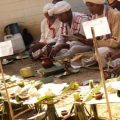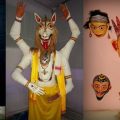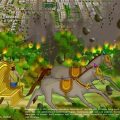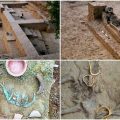What Nidhanpur Copper Plates Say about Assam Antiquity from Mahabharata Era
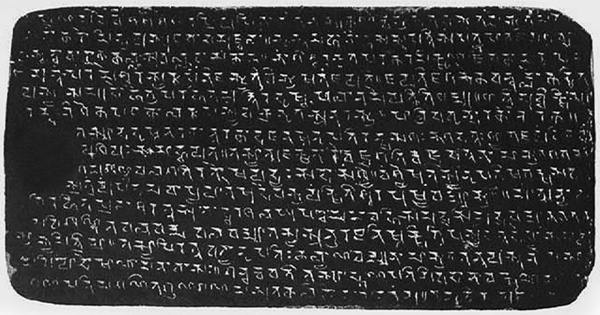
29 December 1912. Location: Nidhanpur, a village in the Sylhet District of Bangladesh. Nidhanpur, during ancient times, was part of the Kamarupa kingdom of Assam. On this day, while digging the soil for building a buffalo shed, a Muslim cultivator came across numerous copper plates. Surmising these plates to be the clue to some hidden treasure, he took them to a local landholder. The latter recognized the importance of the plates and notified relevant authorities in Silchar, now part of Assam. That’s how the precious treasure was discovered, leading archaeologists and historians know about the historicity of ancient Kamrupa, i.e. present Assam.
Inscriptions from the Nidhanpur copper plates originally issued by Bhutivarman and later re-issued by Bhaskarvarman and Doobi (a village in Barpeta district of Assam) copper plates originally issued by Bhutivarman and later re-issued by his descendant Bhaskarvarman throw light on the antiquity of the kings of Assam. The inscriptions tell about the kings of the dynasty of Naraka, Bhagadatta and Vajradatta and their descendants, who ruled for 3000 years. King Naraka of Pragjyotishpur (Assam) finds mention in the Mahabharata. The Doobi copper plate inscription of Bhaskaravarman asserts that Pushyavarman was a descendant of Naraka (of Mahabharata period), Bhagadatta (son of Naraka) and Vajradatta (son of Bhagadatta).
Bhabana Deka in Inscriptions as Sources of Early History of Assam mentions about clay seals of Bhaskaravarman in Nalanda. According to him, the seals may have been carried by the bearers of Bhaskaravarman’s letters to the head of the Nalanda University in connection with Hiuen Tsang’s visit to Kamrupa. Likewise, inscriptions from copper plates found in various parts of India further speak volume about the history of Assam.
Kalpana Sen in Pratidhwani the Echo, Vol II, Issue 1, writes, about the Nidhanpur copper plates as “the first indisputable material evidence of the socio-political Aryanisation of the Surma Barak Valley and it attempts to show what was the socio-political and religious scenario of the Surma-Barak Valley during 7th century C.E.”
King Bhaskaravarman of Kamarupa was also the ally of Sri Harsha. He was the most illustrious king of Assam. Here is the genealogy of the Kamarupa kings as depicted in the Nidhanpur copper plates:
Naraka, Bhagadatta, Vajradatta and their descendants: 3700 BC – 700 CE
Pushyavarman: 700-690 CE
Samudravarman: 690-670 CE
Balavarman: 670-660 CE
Kalyanavarman: 660-480 CE
Ganapati 640-440 CE
Mahendravarman 620-600 CE
NÀrÀyanavarman 600-580 CE
MahÀbhutavarman 580-560 CE
Chandramukhavarman 560-540 CE
Sthitavarman 540-520 CE
Susthitavarman (also known as Mriganka) 520-480 CE
Supratishthitavarman 480-465 CE
Bhaskaravarman 465-420 CE.
Shodhganga, a digital reservoir of Indian theses maintained by INFLIBNET Centre, an autonomous Inter-University Centre of the University Grants Commission (UGC) mentions about the Varman dynasty of Kamrupa as follows, “Pushyavarman is credited to have laid the foundation of the Varman dynasty in Assam. The Doobi Copper plates of Bhaskarvarman clearly trace the lineage of Pushyavaran from the line of Naraka-Bhagadatta. The Nidhanpur grant also supports this view. The Varman line of kings founded by Pushyavarman which ruled for about three hundred years is therefore also known as the Bhauma-Naraka dynasty. According to the Nidhanpur Copper Plate grant of Bhaskarvarman there was a long gap of three thousand years after Vajradatta before Pusyavarman became the ‘lord of the earth.’”
“Altogether thirteen kings of this family ruled over Kāmarūpa. According to P.N Bhattacharya, Pusyavarman ruled in the middle of the 4th century C.E. and was a contemporary of the Gupta Emperor, Samudra Gupta. In the Allahabad Pillar inscription of Samudra Gupta, Kāmarūpa was a frontier kingdom along with Samatata, Davāka, Nepal and Kartripura, whose kings owed allegiance to the Gupta rule. It is believed that the ruler of Kāmarūpa during that time was Pusyavarman.”
References:
1. shodhganga.inflibnet.ac.in
2. http://journaldatabase.info/
Featured image courtesy: Wikipedia.
Visit Indian History Real Truth Facebook group to view related posts. This article is part of ‘JEWELS OF BHARATAM SERIES [TM]‘ by the author.
Disclaimer: The views expressed here are solely of the author. My India My Glory does not assume any responsibility for the validity or information shared in this article by the author.
Rayvi Kumar
Latest posts by Rayvi Kumar (see all)
- Onam: Celebrated by Indians since 11150 BCE; Connection with Nawroz - October 23, 2024
- What Hari-Vishnu Inscription in Sanskrit Tell about Shri Ram Janambhoomi - October 23, 2024
- 29000 Year Old Fossil Evidence of Unicorn Described in Rigvedic Hymns - October 23, 2024

